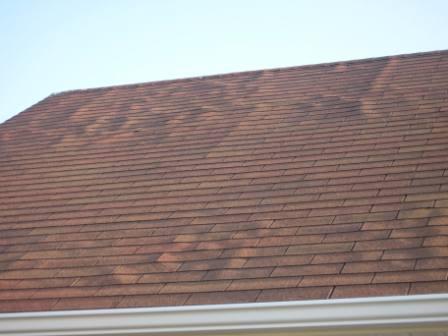The roof is an integral part of any building, providing protection from the elements and ensuring the safety and comfort of its occupants. However, over time, homeowners may notice that their roof shingles appear wavy or uneven, causing concern and raising questions about the integrity of the roof. In this article, we will explore the causes behind wavy roof shingles and discuss potential solutions to address this issue effectively.

Understanding Wavy Roof Shingles
Wavy roof shingles refer to an irregular, undulating pattern observed on the surface of the roofing material. Instead of lying flat and uniform, the shingles appear warped, creating a visually unappealing look. This phenomenon can affect various types of roof shingles, including asphalt, wood, or composite materials.
Causes of Wavy Roof Shingles
1. Poor Installation: Improper installation techniques can lead to wavy shingles. Common installation mistakes include improper nailing, inadequate use of adhesive, or failure to align the shingles properly. These errors can result in the shingles not laying flat and creating a wavy appearance.
2. Roof Deck Issues: Problems with the roof deck, such as unevenness or sagging, can cause the shingles to appear wavy. A compromised roof deck can affect the stability of the shingles, leading to an uneven surface.
3. Moisture Damage: Excessive moisture exposure, whether due to poor ventilation or water infiltration, can cause the roof deck or underlying layers to expand and contract. This expansion and contraction can result in the shingles becoming wavy over time.
The Consequences of Wavy Roof Shingles
This roof not only compromise the aesthetic appeal of a home but can also have more severe consequences:
1. Water Damage: The uneven surface created by wavy shingles can hinder proper water drainage. This can lead to water pooling, which increases the risk of water infiltration and subsequent leaks.
2. Reduced Lifespan: Wavy shingles are more prone to damage caused by wind uplift and other weather elements. The compromised structural integrity can shorten the lifespan of the roof, necessitating premature replacement.
Solutions for Wavy Roof Shingles
1. Professional Inspection: The first step in addressing roof is to consult a professional roofing contractor. They will conduct a thorough inspection to identify the underlying cause of the issue and recommend the appropriate course of action.
2. Corrective Measures: Depending on the specific cause, several corrective measures can be implemented. These may include reinstallation of the affected shingles using proper techniques, addressing underlying roof deck issues, or improving ventilation and moisture control.
3. Roof Replacement: In some cases, particularly if the roof shingles are beyond repair or nearing the end of their lifespan, a complete roof replacement may be necessary. This allows for a fresh installation of shingles, ensuring a flat and uniform appearance.
Preventive Maintenance for Wavy Roof Shingles
To minimize the occurrence of wavy roof shingles in the future, regular roof maintenance is crucial. This includes:
– Scheduled inspections to identify and address any potential issues early on.
– Ensuring proper installation by hiring reputable and experienced roofing professionals.
– Maintaining adequate roof ventilation to prevent moisture buildup.
– Promptly repairing any signs of damage or water infiltration to prevent further complications.
Conclusion:
This roof can be a cause for concern, affecting both the appearance and functionality of a roof. Identifying the underlying causes and taking appropriate corrective measures is essential to restore the integrity and visual appeal of the roof. By seeking professional assistance and implementing preventive maintenance practices, homeowners can ensure a sturdy and aesthetically pleasing roof that will provide long-lasting protection for their homes.



Leave a Reply